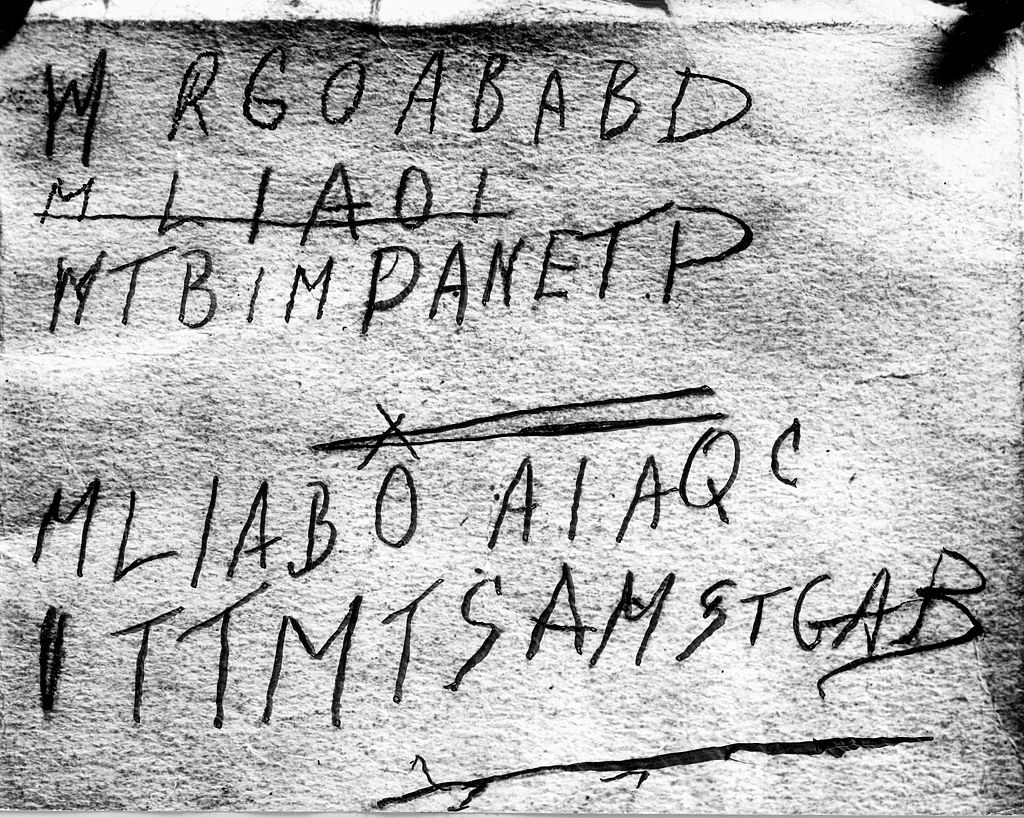Monuments to Mystery: 5 Memorial Sites That Remember Unsolved Crimes

Not creepy at all. (Photo: mjeshenton on Flickr)
There are countless monuments and stories celebrating the bravery and successes of crime-fighters and detectives—for good reason, of course. But there are also a number of memorials to events that have gone unsolved to this day, despite the best efforts of investigators. From graves that hold unidentified corpses to monuments that still get covered in mysterious graffiti, these monuments to mystery remember stories of crimes that no one was able to solve. Here are five:
1. HINTERKAIFECK MEMORIAL
Ingolstadt, Germany


The site of the farmhouse where an unknown killer burdered the Gruber family. (Photo: Andreas Keller on Wikipedia)
This austere German plinth remembers a haunting case that would come to involve incest, psychics, and post-mortem decapitation. German farmer Andreas Gruber lived on the remote Hinterkaifeck farmstead with his wife, their daughter, and two grandchildren, one of which was suspected to have been fathered by Gruber himself. Gruber began noticing strange occurrences such as finding footsteps leading out of the woods, but not back in, and hearing footfalls in the attic. Despite this, Gruber never went to the police, and shortly thereafter he and his family were brutally murdered. After discovering the crime, the police found they had no leads as to the killer, and after dead-ends in every direction they had the victims heads removed and sent to Munich for review by a psychic. Unsurprisingly, this grim tactic didn’t provide any further traction in the case. The heads were lost during World War II, but the bodies are buried in a group grave, and all that stands on the site of the former farmhouse today is this memorial to the mystery.

The farmstead as it looked at the time of the crimes. (Photo: Andreas Biegleder on Wikipedia)
2. WYCHBURY OBELISK
Hagley, England

The more pressing question is who keeps writing that? (Photo: David Buttery on Wikimedia)
Officially known as the Hagley Monument, this English plinth has all been all but disassociated from its original context, in favor of standing in as an enigmatic crypto-memorial to a skeleton found in a tree. The obelisk was created in the mid-1700s, but was not given its current identity until a frightening discovery in 1943. It was during that year that some children found a skull in an elm tree in the Hagley Wood. This morbid find led to the discovery of the entire skeleton that had been hidden there for over a year. A year after the remains were discovered, unsettling graffiti began appearing in the area simply asking, “WHO PUT BELLA DOWN THE WYCH-ELM?” or some variation. Could it have been the killer looking for recognition that they failed to receive due to the furor of World War II? No one has identified the woman in the tree, nor how she ended up there. yet the mysterious graffiti continues to appear to this day the historic spire. Now it is more urban legend than incriminating vandalism.

The obelisk seems naked without some creepy graffiti. (Photo: Tony Hisgett on Wikimedia)
3. VILLISCA AXE MURDER HOUSE
Villisca, Iowa

Sweet dreams. (Photo: Megan on Atlas Obscura)
Less a memorial than a morbid cash-in, the Villisca Ax Murder House operates as a bed and breakfast/museum combination where visitors can spend some time in a house where eight people were mysteriously murdered. During the wee hours of June 10th, 1912 an unknown axe murderer entered the house at 508 East 2nd South in Villisca, Iowa and bludgeoned six adults and two children to death. The crime sent shockwaves of accusations and suspicion throughout the community, and number of people were accused, but none convicted. To this day, no one knows who committed the murders, but modern investigators, hobbyists, and psychics have still tried to crack the case, all unsuccessfully. Even if you don’t want to try and solve the mystery, the house is open for tours and even overnight stays. If that seems like something you might enjoy.
 There is an Etsy project in here somewhere. (Photo: Megan on Atlas Obscura)
There is an Etsy project in here somewhere. (Photo: Megan on Atlas Obscura)
4. GRAVE OF THE MAD TRAPPER OF RAT RIVER
Aklavik, Canada

It’s a mad, mad, mad, mad, mad world. (Photo: Caveat Doctor on Wikipedia)
A rustic sign tells the strange tale of the Mad Trapper of Rat River, a John Doe who led mounties Canadian mounties on a nearly impossible wilderness chase before before being gunned down, providing no answers about his true identity. A man calling himself “Albert Johnson” moved into a cabin in the Northwest Territory of Canada in 1931, and it wasn’t long before he was accused of tampering with local trappers’ equipment. When the mounties arrived at Johnson’s cabin, the confrontation quickly escalated to a full-on siege that left the wooden house in ruins after the authorities tried to flush Johnson out with dynamite. Still, Johnson bolted into the wilderness with the mounties hot on his tail. Unbelievably, the wild man remained on the run through the frozen Canadian backwoods for over month, before he was found 150 miles from his demolished cabin. The man calling himself Albert Johnson was gunned down by the authorities, who never learned a single concrete fact about the mad fugitive.

Even in death, the mystery trapper definitely sells the “mad” part. (Photo: Royal Canadian Mounted Police on Wikipedia)
5. THE GRAVE OF THE TAMAM SHUD MAN
Adelaide, Australia

Cold War spy or lovelorn suicide? (Photo: Bletchley on Wikipedia)
Known alternately as the Tamam Shud Man or the Somerton Man, the mysterious body found on an Australian beach in 1948 is one of the most baffling cold cases the country has ever seen. The body was found on December 1st, 1948, lounging against a sea wall, having died of unknown causes. Investigators were unable to identify the man based on any of his physical features, so they began searching for abandoned bags and luggage, assuming he must have been a visitor to the area. They found a briefcase that was linked to the body by the appearance of a distinctive type orange thread. In addition to the thread, the briefcase contained a pocket watch that held a scrap of paper torn from a book; the paper simply read “Tamum Shud,” Persian for ”It is Ended.” This phrase is also the final line of The Rubaiyat of Omar Khayyam which was popular at the time, but rare in Australia. Detectives were soon able to find the very book the paper was torn from, but it presented more questions than answers. The book had a page filled with what appeared to be indecipherable code. After undoubtedly letting out a frustrated sigh, the investigators traced the book to a local nurse who refused to confirm anything about the case. To this day no one is sure what happened to the Tamam Shud Man, but it is believed that he was either a poisoned Cold War spy, or a lovelorn suicide. Whichever it is, he is most certainly a fascinating mystery.
 Maybe it was a coded love poem? (Photo: Viniciusmc on Wikipedia)
Maybe it was a coded love poem? (Photo: Viniciusmc on Wikipedia)













Follow us on Twitter to get the latest on the world's hidden wonders.
Like us on Facebook to get the latest on the world's hidden wonders.
Follow us on Twitter Like us on Facebook